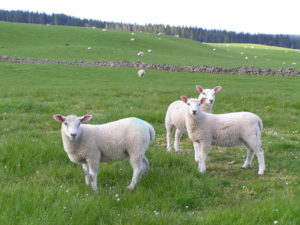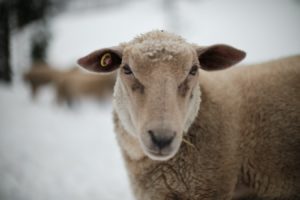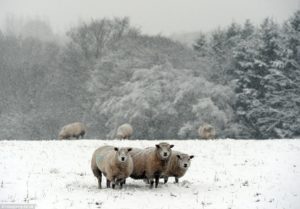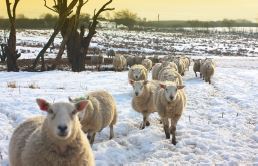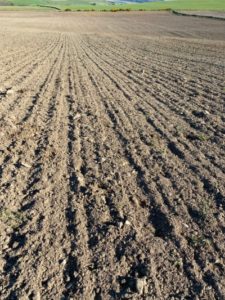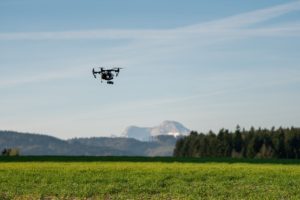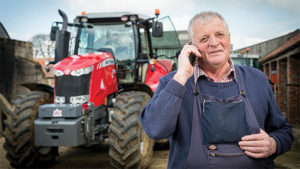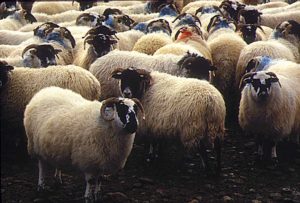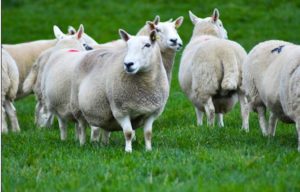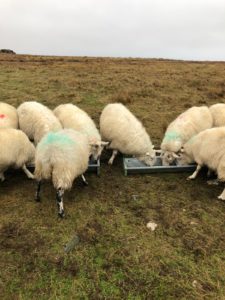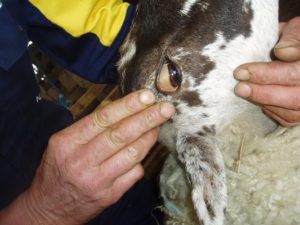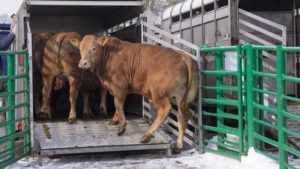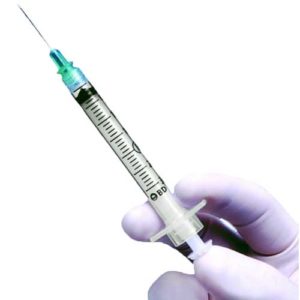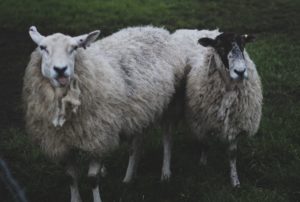Other Topics
Risks To Lambs In The Summer Months
While the highest risk period for lamb deaths is now past there are still threats to consider in the summer months read more >>
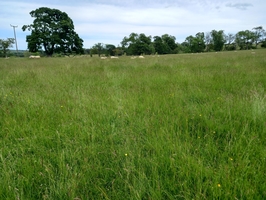
Reduce Risk Of Scald In Lambs This Season
Scald is caused by bacteria (Dichelobacter nodosus) in the grass and leads to damage to the soft tissue between the toes of lambs. It can lead to footrot if it goes untreated, but it is a different disease with a greater environmental influence than footrot. Read more>>
Plant Poisoning In Sheep
SRUC vet labs find January to be the most common month for diagnosing death in sheep due to plant poisoning. With the recent snow falling and the lack of grass sheep are more likely to seek shelter and forage on alternative sources. Meaning flock keepers should be extra vigilant just now and limit sheep straying by offering forage in the field and maintaining fences. This includes sheep away at wintering. Read more>>
Issues To Look Out For In Extreme Weather
- Don’t forget about away wintered ewes
- Ewes that don’t eat!
- Feet issues
Eye Conditions Of Adult Sheep
There are three main eye conditions of the ewe, all of which can be associated with harsh winter weather and housing of ewes. The most common condition is Infectious Keratoconjunctivitis, more commonly called “pink eye” or “snow blindness”. This is often related to bad weather such as driving snow or high winds but also dust which may be in hay. Read more>>
Dealing With A Lack Of Water
While many areas of Scotland have now had some much required rain, there are still areas that are extremely dry. There has been low levels of rainwater this year, which have resulted in low water levels. We have heard from numerous people, that water supplies are low with some private supplies being dry already. Read more>>
Case Study: Cost Savings Of Using A Drone
Could using a drone on farm save you money and reduce your labour costs? Could it improve animal welfare? Read more>>
It's Good To Talk
Anyone who has done a calving or a lambing will be aware that this time of year is a period of high pressure and is likely to be very stressful at times. Given the current situation with Corona Virus, we are well and truly in uncharted territory. Livestock, however, will be blissfully unaware of the current national emergency, so we can expect all the usual highs and lows that the Spring brings. Read more>>
Culling Decisions For Ewes
Keeping unproductive ewes decreases the breeding potential of the flock, as well as the cost associated with the system. Ewes which are unproductive, should be drawn out before the tup is introduced and the next breeding season begins.
There are various reasons why a ewe may be unproductive, these may be for the following reasons: Read more>>
Can Minerals Improve Flock Rearing Percentages?
Understanding and correcting mineral deficiencies can mean the difference between a poor and a good lamb crop next year. Iodine and selenium deficiencies affect fertility and cause abortions, cobalt influences lamb vigour and copper deficiency causes general ill thrift in ewes which will affect their pregnancy success. Read more>>
Training Ewe Lambs To Eat Hard Feed
In the UK, we are fortunate to have easy access to concentrate feed when we need it – our counterparts in the southern hemisphere are less fortunate. We can plan to make the most of grass, but we have a back-up in times of need. This back-up is only useful if our ewes know to eat this concentrate, they can be simply trained to eat. This is especially relevant in extreme winters when a supplement of energy is essential. Read more>>
Copper: Know Your Limits
Trace elements play an important role in livestock nutrition and contribute significantly towards health, immunity, growth, fertility and lactation. The functions of many hormones and enzymes are depended on trace elements and therefore they are essential for normal body function. However, care must be taken to ensure that supplementation overcomes any deficiencies in forage but at the same time, the risk of toxicity and exceeding legal limits must be avoided. Read more>>
Tips For Transporting Livestock In Hot Weather
With the recent spell of hot weather and further high temperatures forecast the threat to animal welfare is a risk during transport. The following tips will help to protect animals from the stress of transportation during hot and humid weather. Read more>>
Tips For Injecting Cattle And Sheep
Bruising, abscesses and trauma are the three main reasons for beef and sheep carcases to be rejected at slaughter. A common cause of abscesses (a collections of pus in confined tissue spaces) is bacterial infection resulting from poor needle practice, particularly in the use of dirty needles. In young stock these abscesses and lesions can stay present from the time of injection until slaughter. Having to trim around these areas results in loss of meat and inevitability decreases carcass value as well as presenting an unwelcome health challenge for the animal. Read more>>
Cull Ewe Prices and Eid
Eid al-Adha falls on the 12 August this year (2019) and provides an opportunity to sell early weaned cull ewes over the next couple of weeks into higher demand.
As supply floods the market, the price may not jump significantly but there is a ready market, particularly this year as many ewes are in good condition. Read more>>
Sign up to the FAS newsletter
Receive updates on news, events and publications from Scotland’s Farm Advisory Service

